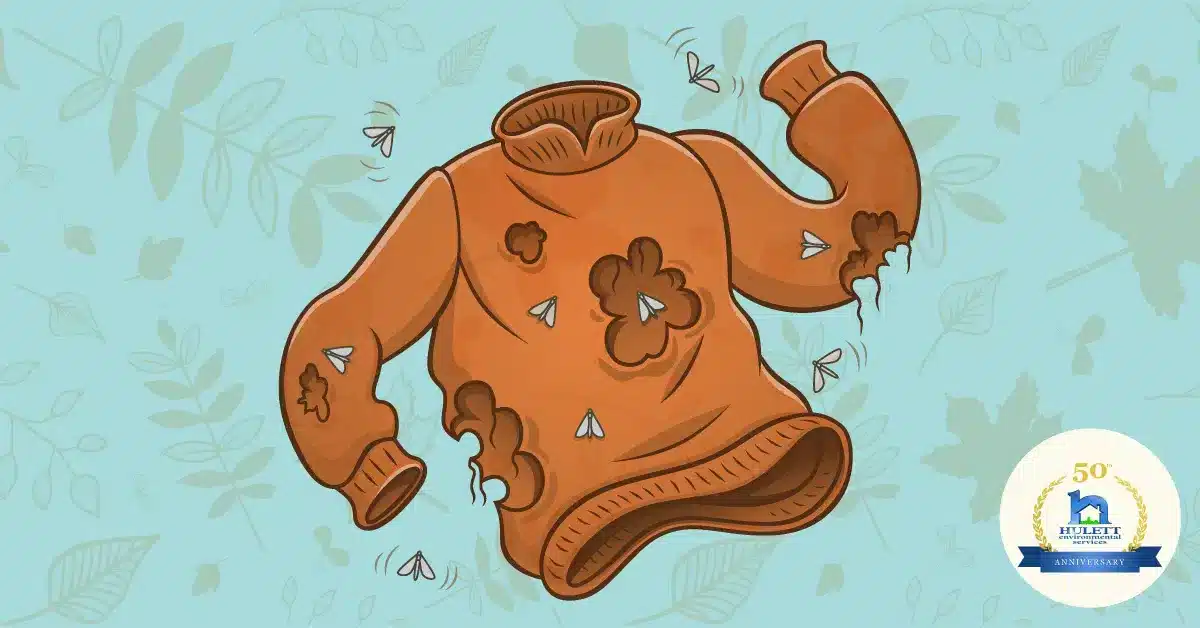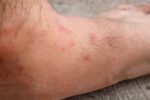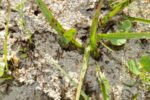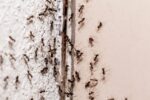
How Moths Can Ruin Your First Sweater Weather Day
With the fall season upon us, it may be time to break out your sweaters. You look forward to the change in the seasons but what’s this? Holes in your favorite sweaters? How could this be? Well, most likely clothes moths laid their eggs on your sweaters and other wool, fur and animal-based materials in your closet. When clothes moth eggs hatch, the natural fibers in your sweaters, especially wool, provide a bountiful food supply for clothes moth larvae.
It’s not just your clothes . . .
As it turns out, clothes moths possess the ability to digest keratin, a major protein present in products containing natural fibers. Clothes moths don’t stop there though, they’re also known to attack upholstered furnishings, pet food and, powdered milk. According to the University of Florida (UF)/Institute of Food and Agricultural Science (IFAS) website,
- Animal products are fair game for clothes moths, including bristles, dried hair, and leather.
- Larvae infest materials containing food spills, such as oils, dried meat, and cereal products.
- Lint and paper are likable feed for larvae.
- Larvae feed on combinations of natural and synthetic fibers butnot solely synthetic fibers.
- In nature, larvae have been discovered infesting hair, pollen, dead insects and animal remains.
Adult clothes moths do not feed on fabrics but their larvae do
Like many other moths, according to Science ABC’s website, adult clothes moths do not eat at all! Aside from the fact they’re just too busy trying to grow their populations, adult clothes moths do not have mouthparts and unlike pantry moths and moths that love porchlights, adult clothes moths are not attracted to light. When exposed to light, adult males will fly and female will crawl towards the darkness. This is one way you can tell the difference between pantry moths and clothes moths. Moths flying out of your cabinets and heading for your indoor lamps give themselves away as pantry moths.
Two types of clothes moth adults
Generally, two types of clothes moths cause problems in your closets; both belong to the Tineidae family of small moths are considered important pest insects. Webbing clothes moths: Yellowish-gold in color, adults range from ¼- to ½-inch in length. Webbing clothes moths’ heads appear gold or yellow, with broad lance-like wings, somewhat rounded at the tips, held like tents above their abdomens, when at rest. Case-making clothes moths: Similar in size to webbing clothes moths, case-making moths’ front wings are browner than webbing moths with three dark spots on their front wings.
Destructive larvae
Both webbing clothes moths and case-making clothes moth larvae emerge as 1/16-inch white caterpillars with dark heads. Spinning webs as they alter your wardrobe, case-making clothes moth larvae produce silken tubes that they remain inside of as they grow, protecting them from predators and the environment. Webbing clothes moth casings, on the other hand, are attached to, and often located in protected hems and seams. Because webbing moth casings are attached to the sweater buffet, webbing moths feed in one area. By contrast, case-making moths are more mobile, hauling their casings around with them damaging your favorite fashions in a variety of areas.
Keep out! Pupating, duh!
When clothes moths are ready to grow out of their juvenile delinquent phases, they storm off to their rooms, lock their doors and create spindle-like cocoons, in order to pupate. After 10 to 12 days in warm weather and up to four weeks in the winter, adult clothes moths emerge ready to make more babies that will love to eat your sweaters. With life cycles ranging from two months to two years, male clothes moths generally outlive females, continuing to mate throughout their lives. Depending on the temperature, female clothes moths can deposit 100 to 150 eggs at a time on products that their young will devour. These eggs aren’t affixed very firmly to products and can become easily dislodged. After five or so days, larvae possessing mouthparts for chewing and spinning silk, emerge and grow to about ?-inch before entering their pupation stages.
Stop the madness, mothproof your closets for next season
The most effective method of clothes moth control involves diligent housekeeping. Regularly vacuuming and sweeping closets and storage areas sounds tedious but it can make a huge difference when dealing with tiny pests. Periodically investigate ducts, attics, and areas where dust and bugs tend to accumulate. When storing clothes for an extended period of time, consider dry cleaning or laundering items before you store them in airtight containers. Periodically brush stored items and check for any signs of clothes moths.
Clothes moth control
To address current clothes moth infestations, South Florida homeowners can try freezing or heating clothes affected by moths, along with dry ice fumigation. While mothballs were once used, these little chemical bombs have fallen out of use, due to their suspected health risks, including nausea, headaches, respiratory issues, as well as accidental ingestion by children and pets. Cedar and cedar-lined closets can deter clothes moth larvae at an early stage but do not affect larger larvae and adult moths.
Take the worry out of eliminating clothes moths
Homeowners can purchase commercial products that can reduce clothes moth populations but these products can damage clothes and only work for a limited amount of time. Find the peace of mind you deserve by contacting a professional company to pest-proof your South Florida home. Contact Hulett, your local family-owned and operated, environmentally responsible pest control company. Our integrated pest management system uses baiting systems and other high quality, odorless materials and pin-pointed, low dose chemical treatments when necessary, to eliminate and prevent pests in your home or business. Hulett’s Healthy Home approach offers programs that work to create a pest barrier around your property, year-round. We guarantee you’ll be satisfied with our services, during sweater season and every season. To schedule a free pest inspection, just call Hulett at (866) 611-BUGS.




